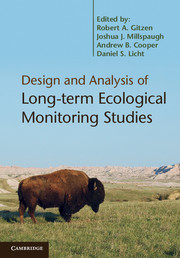Preface
Environmental monitoring is of fundamental importance to natural resourcemanagers, scientists, and human society in general – consider theinarguable importance of quantifying changes in climate, air and water quality,surface and ground water dynamics, and similar attributes. However, monitoringstudies also have the potential to be a significant waste of time and money(see, for example, discussions by Legg and Nagy 2006). To have value, amonitoring program needs to produce information of sufficient accuracy relevantto a clearly defined purpose, and to do so cost-effectively. Yet, even in theshort term, natural populations and systems are inherently variable and usuallydifficult to study. Adding in a multi-year (usually multi-decade) focus createsmany additional challenges and scales of uncertainty – and increases thepotential amount of time and money wasted if these challenges are not adequatelyaddressed. Many monitoring efforts have failed or will fail due to poorlydefined objectives and inadequate designs (Yoccoz et al. 2001,Noon 2003, Legg and Nagy 2006, Lindenmayer and Likens 2010a). Yet, statisticiansand ecologists have developed, and continue to develop, a rich body of knowledgeand practical methods for addressing these challenges, and have applied thesemethods successfully at a variety of scales for a diversity of attributes.Our goal for this volume is to help make some key components of thisknowledge base, as well as new extensions, readily available and accessibleto quantitative and applied natural resource scientists and managers,program managers, students, and consulting biometricians involved withenvironmental monitoring worldwide.
